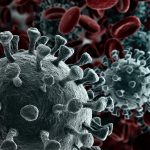
Money may not buy happiness, but it might give low-income obese people an extra incentive to lose weight, a new study suggests. The study, of people from urban neighborhoods, found that cash rewards encouraged participants to shed some extra pounds, versus a weight-loss program with no financial bonuses. And the effects were similar whether people were rewarded for reaching their weight-loss goals, or simply for making healthy lifestyle changes. Over six months, 39% to 49% of people given cash incentives lost at least 5% of their starting weight. That compared with 22% of study participants given no monetary motivation. The caveat, experts said, is that no one knows how financial rewards pan out in the long run. In this study, the weight-loss differences among the groups had begun to narrow by the one-year point. “This would only be impactful if people could keep losing weight at this rate over the longer term,” said Karen Glanz, of the University of Pennsylvania’s Center for Health Incentives and Behavioral Economics in Philadelphia. Glanz, who was not involved in the study, said that researchers still have much to learn about the role for financial incentives in weight loss — including how and when it’s best to use them. The concept itself is not new. Studies have suggested that offering people money in exchange for lost pounds can bear fruit… read on > read on >



























-300x200.jpg)










